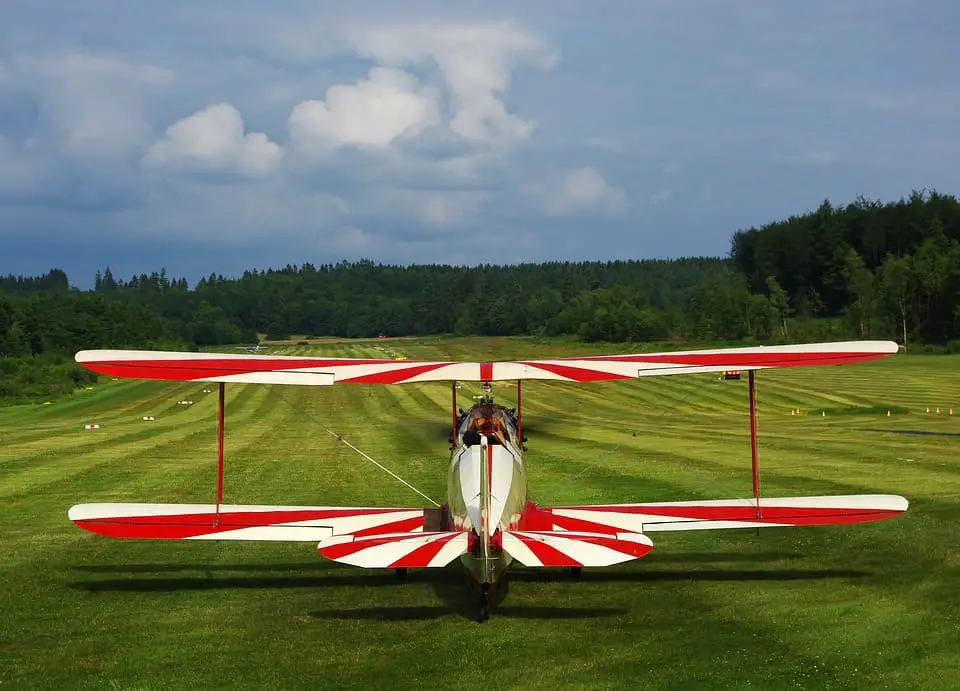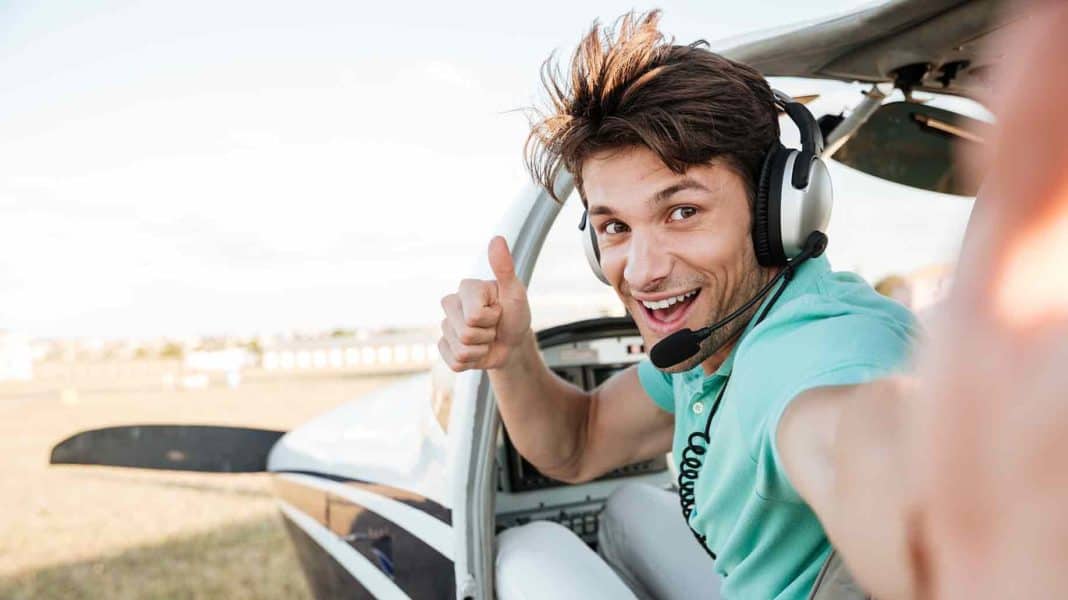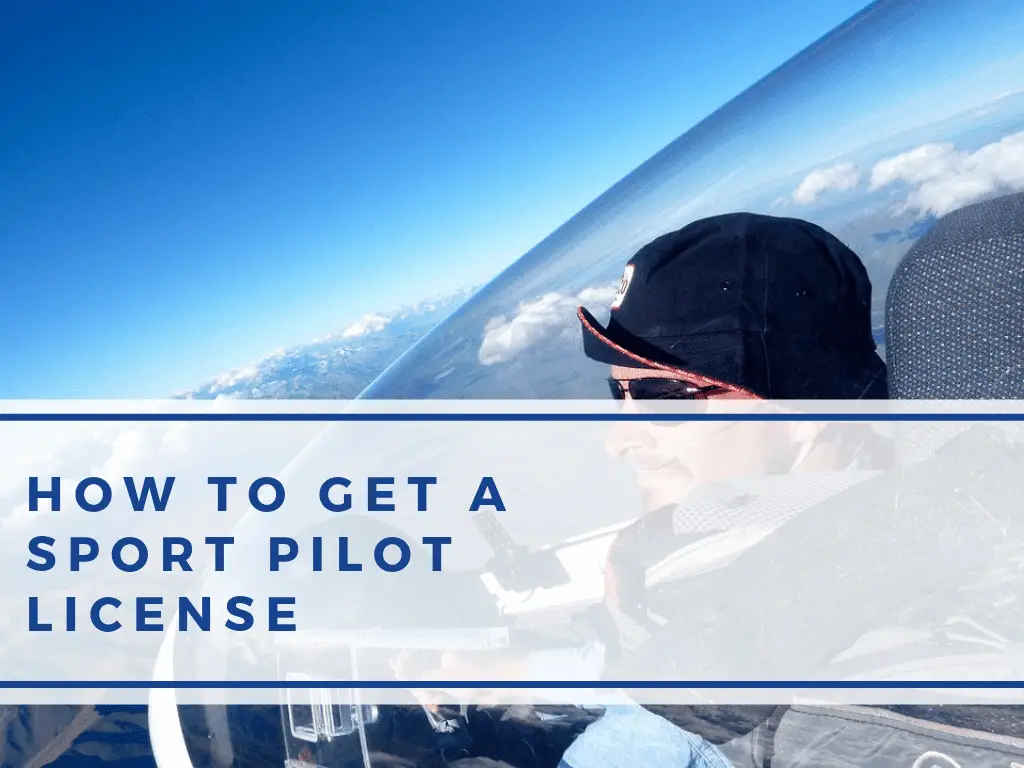Table of Contents
*This post may contain affiliate links. As an Amazon Associate we earn from qualifying purchases.
A sport pilot license offers an alternative for students without the time or money to become a private pilot. It lets people fly planes on a limited basis, within certain physical boundaries, for recreation.
What is a Sport Pilot License?
The sport pilot license is relatively new. The FAA instituted it in 2004 to give hobbyists a chance to fly light aircraft on a limited basis. Unlike private pilot licenses, which can take months to earn, getting a pilot license to fly a light sport aircraft may only take a few weeks. A hobby/sport flying license only costs around $4500-$5000, while a private pilot certificate may cost $12,000 or more.
Sport pilot flying is going through some growing pains. While 14,000 licenses were issued for private pilots in 2015, only 398 people received certification to be a sport pilot. However, this may be because many aspiring pilots aren’t familiar with this new license choice.
Before learning how to get a pilot’s license for flying a sport aircraft, you should know a few things about LSAs and the rules for flying them.
What is a Light Sport Aircraft?
A light sport aircraft is lighter and less expensive than a typical small private plane. Some examples of light sport aircrafts (LSAs) are gyroplanes, gliders, free balloons and waterships, rotorcraft, powered parachute, ultra-lightweight planes and experimental planes.
An LSA has the following features:
- A maximum airspeed (Vh) of 120 knots calibrated (CAS) or less
- A non-pressurized cabin
- Seating for the pilot and one other person
- One reciprocating engine
- A stall speed without flaps of 40 knots CAS or less
- A maximum takeoff weight of 1320 pounds or less, ( 1430 pounds or less for water takeoff )
- Fixed landing gear for regular aircraft, but aircraft made for water landings may have fixed or retractable gear
There are four categories of LSAs:
- Sport Pilot-Eligible or Standard Category are pre-existing aircraft that meet all LSA requirements and can be flown by a sport pilot
- E-LSA aircraft, sold as kits, can be built by pilots at home following manufacturer’s instructions. Manufacturers of E-LSA aircraft are ASTM-compliant.
- E-AB aircraft are experimental and built at home by the pilot. Experimental aircraft must meet LSA standards to be cleared for flight, and they can only be flown by a pilot for personal use. E-AB aircraft can’t be rented or used as an instructional aircraft.
- S-LSA: Factory-built special light sports aircraft designed for LSA standards. S-LSAs are ready to fly straight out of the factory. These lightweight planes meet ASTM (American Society for Testing & Materials) criteria. A maintenance specialist or mechanic with an FAA LSA maintenance rating can service S-LSA planes.
The Cessna Skycatcher and other examples of light sport aircraft are listed here.
Requirements for Training
To study for a sport pilot certificate, you’ll need to be at least 16, but you can’t take the test till you’re 17. You will need to have a U.S. driver’s license and a student pilot license or a student pilot license and aviation medical certificate.
You’ll need to speak and write English, and completer 15 hours of flight time with an instructor and five solo hours. At the end of training, you must pass a written exam and practical flight test.

Do I Need an Aviation Medical Exam?
Most people won’t need aviation medical when they apply for a sport pilot certificate. If you have a medical condition that may cause problems during flight, see an aviation medical examiner before signing up for training to get proof that you are fit to fly.
Skills You’ll Learn
To earn your sports pilot license, you must receive ground training in several subjects, including:
- Preflight Action
- Density Altitude
- Regulations & Flight Operations
- Aeronautical Charts
- Aircraft Weight and Balance
- Collision Avoidance & Wind Shear
- Accident Reporting
- Weather Identification & Weather reports
- Aerodynamics & Systems
- Stall and Spin Awareness
The written exam has 40 questions. You need a score of 70 or above to pass, and the review is timed at two hours. You can take the test, with your instructor’s endorsement, at any point in your training.
You earn your certificate by completing an oral exam followed by a flight exam. An FAA examiner will accompany you on the flight. You will perform maneuvers, including launch, landing, preflight operations, navigation, and post-flight procedures. The examiner will grade you based on FAA standards for your class of sports pilot (powered parachute, rotorcraft, glider,etc.).
The practical exam is the test you’ll take to earn your final certificate. This exam consists of a verbal exam followed by a flight exam, in which you and an FAA examiner will take a flight, and you’ll perform certain maneuvers, graded against the FAA’s practical test standards for sport pilots.
Limitations
You can fly for recreation from small airports without towers if you have a sport pilot license. Operating at night, with more than one passenger or for money is prohibited. You can’t fly in Class A, B, C or D airspace unless you have instructor endorsements.
A sports pilot can fly below 10,000 feet only and has to stay in U.S. airspace. A pilot with this type of license can fly sports aircraft in the category and class he is certified to use, and he must fly in an area that doesn’t need traffic control.
Pros and Cons of Light Sport Aircraft
The pros of LSAs include their simplicity and low-cost. Light sport aircraft are easy to fly and maintain. A sport pilot license cost is much cheaper than the cost of a private pilot license. Training also takes less time. Most LSA students don’t need a medical aviation certificate.
LSA cons include small interiors with less leg room, the restriction on having more than one passenger, limited baggage space, no night flying, and slow flight speed. There is also some risk associated with experimental aircraft.
Sport Aircraft Example – the Ultralight Trike
Sport aircraft can be funny looking to most people, but they’re lots of fun to fly. The ultralight trike, a powered hang glider, is controlled by the pilot shifting his weight. A trike has a fabric flex-wing that suspends from a trike fuselage pod. The aircraft is boosted by a pusher-propeller. Trikes are similar to hang gliders.
Once a pilot has learned how to use a trike or any lightweight, leisure aircraft, he may be tempted to skip pre and post-flight checks, but this is dangerous. Hang a laminated checklist around your neck so you’ll have both hands free and have the information handy.
Trikes have been called “motorcycles of the air,“ and that’s a good analogy. A trike moves quite differently than a plane, and some pilots have compared it to sitting on a swing ride at a county fair. Trikes have open seating, so you can feel the air around you as you fly.
It may be easy to learn how to fly a trike, but buying one is out of the question for most people. Trikes can cost as much as $66,500, so renting one is a better option.
Sport Pilot, Recreational Pilot and Private Pilot Comparisons
Do you want to fly, but can’t decide which certificate is appropriate? Check out information comparing the advantages and disadvantages of each license to make an informed decision.
A private pilot has more choices when it comes to aircraft, when, how and where to land, and the number of passengers he can take on a plane. There’s a third class of FAA license, the recreational license, that allows pilots more freedom than a permit for sport flying but less than a private pilot license.
Private pilots, as well as recreational pilots, need an FAA medical certificate. In most instances, sports pilots only need a U.S. Driver’s License.

Image: Money Crashers
There are no size limitations on what type of aircraft a private pilot can fly, provided the pilot has the training for that classification of plane. A recreational pilot can fly a maximum 180 horsepower, four-seat plane. A sports pilot can only have one passenger and fly an aircraft weighing no more than 1320 pounds, as stated above.
Private pilots need a minimum of 40 hours flight training, but it usually takes 70 hours for most students to complete training. Recreational pilots need a minimum of 30 hours, with 44 hours being the average for completion. Sports pilots only need 20 hours, but may log as many as 33 hours before getting a license.
Only private pilots can fly outside the U.S and in situations with less than three miles visibility. Private pilots can offer sightseeing flights to benefit charity; recreational and sports pilots can’t offer such flights.
Recreational and sports pilots are restricted from flying in B, C, and D airspace unless they have additional instruction.
You can get a license for sport or recreational flying and take additional lessons to receive a private pilot certification. This route may work if you’re not sure if you can master the private pilot lessons without lots of real-life practice in the skies.

